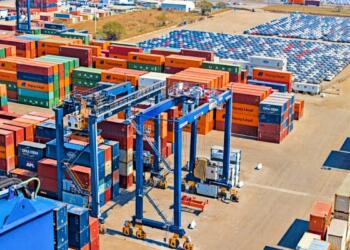
The pharmaceutical industry faces various challenges , where supply chain optimization and the adoption of digital technologies emerge as essential pillars to face current and future challenges, according to the Global Pharmaceutical Supply Chain Study 2024 by Miebach Consulting.
According to the document shared by the consulting firm, after years of accumulating inventory “just in case” due to the pandemic , adapting and modernizing logistics processes will be crucial to ensure robust resilience and effective cost management.
Additionally, the global medicines industry is projected for significant expansion, with spending reaching $1.9 billion by 2027. This growth does not include COVID-19 vaccines or therapeutic spending.
The key factors driving this growth are the introduction of innovative products, patent expirations, and the rise of biosimilars.
The study predicts that Latin America, Asia Pacific, Africa and the Middle East will experience volume growth of more than 10% and a notable increase in spending, linked to population-driven expansion and the use of higher-cost products.

One of the most important approaches, currently, to improve supply chains is the optimization of processes and organizational changes, also highlighting :
- Inventory and Network Optimization Regular network optimization with comprehensive studies has become a top priority, displacing the traditional focus on mere cost reduction. This change responds to the need to increase resilience in the face of unexpected disruptions such as the COVID-19 pandemic and other geopolitical events.
- Visibility and collaboration Visibility throughout the supply chain, facilitated by the integration of global control towers, and genuine collaboration with logistics partners, are essential for effective planning and continuous operation. Collaborative forecasting and integrated business planning are key tools to achieve these goals.
- Automation and technology: The automation of logistics processes and the use of artificial intelligence (AI) and big data are fundamental technologies to improve efficiency and resilience. Adopting AI-based modules for network planning and optimization can offer a significant competitive advantage.

Furthermore, the study also highlights that although the pharmaceutical industry is a step behind others in implementing advanced solutions, it is beginning to adopt automation , collaborative partnerships and supply chain planning with approaches such as sales planning and operations (S&OP) and integrated business planning (IBP).
The analysis explains that, in the last decade, just as the priority has shifted from cost reduction to supply chain optimization , visibility remains crucial, but IT systems integration and collaboration with logistics providers are important challenges . Overcoming them requires genuine collaboration with partners, which can significantly strengthen the supply chain.
Likewise, among the proposed solutions are:
- Materials handling automation: Implement automated solutions for materials handling and internal transportation, as well as the optimization and bidding of transportation services.
- Inventory management, centralization of inventories on a regional and global scale, along with multi-level optimization, are recommended strategies to improve efficiency.
- Collaboration with suppliers, strengthening relationships with logistics providers, to ensure an uninterrupted production flow.

In that sense, automation and 24/7 operations are becoming a necessity, driven by labor shortages and competition in metropolitan areas.
The survey revealed that although data management has improved, inventory optimization remains essential to reduce costs and improve efficiency.

The global pharmaceutical industry study was carried out from November 2023 to January 2024 and used an online survey questionnaire, which was published globally on internet portals, social networks and in the press, where there were more than 300 participants of all the world.
The majority of participants come from supply chain and logistics roles , with a notable 10% in purchasing and 6% in executive positions, ensuring an accurate representation of the current state of supply chains, encompassing their evolution, challenges and future trends.
Comment and follow us on X: @karinaquintero / @GrupoT21















